Xinran Li
Learn as Individuals, Evolve as a Team: Multi-agent LLMs Adaptation in Embodied Environments
Jun 08, 2025



Abstract:Large language models (LLMs) possess extensive knowledge bases and strong reasoning capabilities, making them promising tools for complex, multi-agent planning in embodied environments. However, despite LLMs' advanced abilities and the sophisticated modular design of agentic methods, existing LLM-based planning algorithms remain limited by weak adaptation capabilities to multi-agent embodied scenarios. We address this limitation by introducing a framework that enables LLM agents to learn and evolve both before and during test time, equipping them with environment-relevant knowledge for better planning and enhanced communication for improved cooperation. Inspired by centralized training with decentralized execution in multi-agent reinforcement learning, we propose a \textit{Learn as Individuals, Evolve as a Team (LIET)} paradigm for multi-agent LLMs adaptation. At the individual level, LLM agents learn a local utility function from exploratory datasets to better comprehend the embodied environment, which is then queried during test time to support informed decision-making. At the team level, LLM agents collaboratively and iteratively maintain and update a shared cooperation knowledge list based on new experiences, using it to guide more effective communication. By combining individual learning with team evolution, LIET enables comprehensive and flexible adaptation for LLM agents. Our experiments on Communicative Watch-And-Help and ThreeD-World Multi-Agent Transport benchmarks demonstrate that LIET, instantiated with both LLaMA and GPT-4o, outperforms existing baselines and exhibits strong cooperative planning abilities.
Revisiting Multi-Agent World Modeling from a Diffusion-Inspired Perspective
May 27, 2025



Abstract:World models have recently attracted growing interest in Multi-Agent Reinforcement Learning (MARL) due to their ability to improve sample efficiency for policy learning. However, accurately modeling environments in MARL is challenging due to the exponentially large joint action space and highly uncertain dynamics inherent in multi-agent systems. To address this, we reduce modeling complexity by shifting from jointly modeling the entire state-action transition dynamics to focusing on the state space alone at each timestep through sequential agent modeling. Specifically, our approach enables the model to progressively resolve uncertainty while capturing the structured dependencies among agents, providing a more accurate representation of how agents influence the state. Interestingly, this sequential revelation of agents' actions in a multi-agent system aligns with the reverse process in diffusion models--a class of powerful generative models known for their expressiveness and training stability compared to autoregressive or latent variable models. Leveraging this insight, we develop a flexible and robust world model for MARL using diffusion models. Our method, Diffusion-Inspired Multi-Agent world model (DIMA), achieves state-of-the-art performance across multiple multi-agent control benchmarks, significantly outperforming prior world models in terms of final return and sample efficiency, including MAMuJoCo and Bi-DexHands. DIMA establishes a new paradigm for constructing multi-agent world models, advancing the frontier of MARL research.
CheX-DS: Improving Chest X-ray Image Classification with Ensemble Learning Based on DenseNet and Swin Transformer
May 16, 2025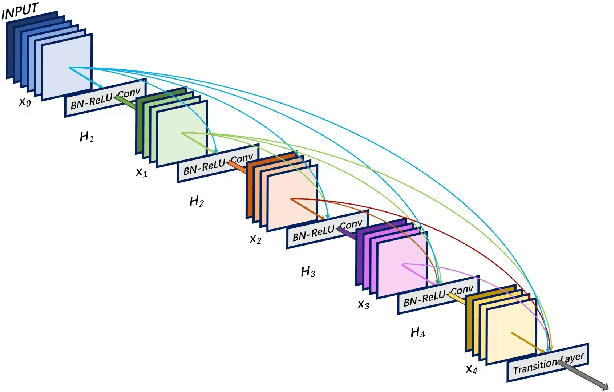


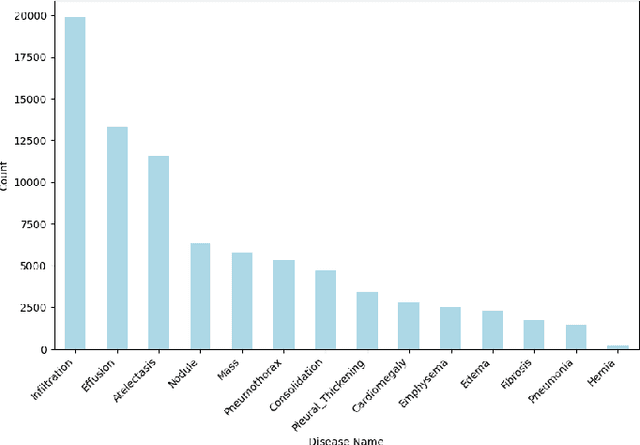
Abstract:The automatic diagnosis of chest diseases is a popular and challenging task. Most current methods are based on convolutional neural networks (CNNs), which focus on local features while neglecting global features. Recently, self-attention mechanisms have been introduced into the field of computer vision, demonstrating superior performance. Therefore, this paper proposes an effective model, CheX-DS, for classifying long-tail multi-label data in the medical field of chest X-rays. The model is based on the excellent CNN model DenseNet for medical imaging and the newly popular Swin Transformer model, utilizing ensemble deep learning techniques to combine the two models and leverage the advantages of both CNNs and Transformers. The loss function of CheX-DS combines weighted binary cross-entropy loss with asymmetric loss, effectively addressing the issue of data imbalance. The NIH ChestX-ray14 dataset is selected to evaluate the model's effectiveness. The model outperforms previous studies with an excellent average AUC score of 83.76\%, demonstrating its superior performance.
* BIBM
Exponential Topology-enabled Scalable Communication in Multi-agent Reinforcement Learning
Feb 27, 2025
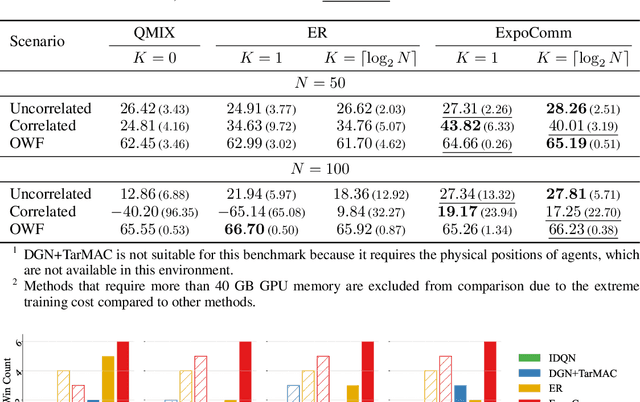
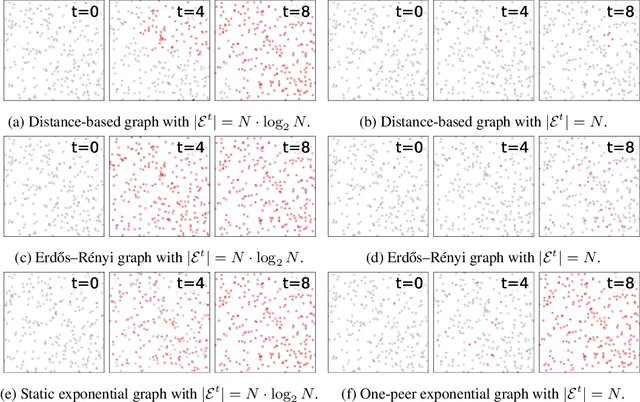
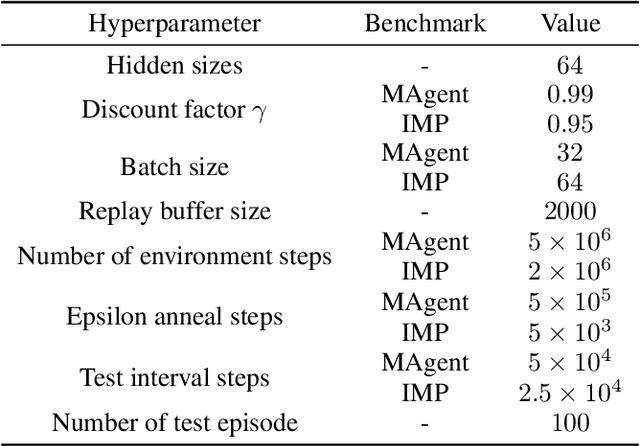
Abstract:In cooperative multi-agent reinforcement learning (MARL), well-designed communication protocols can effectively facilitate consensus among agents, thereby enhancing task performance. Moreover, in large-scale multi-agent systems commonly found in real-world applications, effective communication plays an even more critical role due to the escalated challenge of partial observability compared to smaller-scale setups. In this work, we endeavor to develop a scalable communication protocol for MARL. Unlike previous methods that focus on selecting optimal pairwise communication links-a task that becomes increasingly complex as the number of agents grows-we adopt a global perspective on communication topology design. Specifically, we propose utilizing the exponential topology to enable rapid information dissemination among agents by leveraging its small-diameter and small-size properties. This approach leads to a scalable communication protocol, named ExpoComm. To fully unlock the potential of exponential graphs as communication topologies, we employ memory-based message processors and auxiliary tasks to ground messages, ensuring that they reflect global information and benefit decision-making. Extensive experiments on large-scale cooperative benchmarks, including MAgent and Infrastructure Management Planning, demonstrate the superior performance and robust zero-shot transferability of ExpoComm compared to existing communication strategies. The code is publicly available at https://github.com/LXXXXR/ExpoComm.
SymbioSim: Human-in-the-loop Simulation Platform for Bidirectional Continuing Learning in Human-Robot Interaction
Feb 11, 2025Abstract:The development of intelligent robots seeks to seamlessly integrate them into the human world, providing assistance and companionship in daily life and work, with the ultimate goal of achieving human-robot symbiosis. To realize this vision, robots must continuously learn and evolve through consistent interaction and collaboration with humans, while humans need to gradually develop an understanding of and trust in robots through shared experiences. However, training and testing algorithms directly on physical robots involve substantial costs and safety risks. Moreover, current robotic simulators fail to support real human participation, limiting their ability to provide authentic interaction experiences and gather valuable human feedback. In this paper, we introduce SymbioSim, a novel human-in-the-loop robotic simulation platform designed to enable the safe and efficient development, evaluation, and optimization of human-robot interactions. By leveraging a carefully designed system architecture and modules, SymbioSim delivers a natural and realistic interaction experience, facilitating bidirectional continuous learning and adaptation for both humans and robots. Extensive experiments and user studies demonstrate the platform's promising performance and highlight its potential to significantly advance research on human-robot symbiosis.
Achieving Hiding and Smart Anti-Jamming Communication: A Parallel DRL Approach against Moving Reactive Jammer
Feb 04, 2025



Abstract:This paper addresses the challenge of anti-jamming in moving reactive jamming scenarios. The moving reactive jammer initiates high-power tracking jamming upon detecting any transmission activity, and when unable to detect a signal, resorts to indiscriminate jamming. This presents dual imperatives: maintaining hiding to avoid the jammer's detection and simultaneously evading indiscriminate jamming. Spread spectrum techniques effectively reduce transmitting power to elude detection but fall short in countering indiscriminate jamming. Conversely, changing communication frequencies can help evade indiscriminate jamming but makes the transmission vulnerable to tracking jamming without spread spectrum techniques to remain hidden. Current methodologies struggle with the complexity of simultaneously optimizing these two requirements due to the expansive joint action spaces and the dynamics of moving reactive jammers. To address these challenges, we propose a parallelized deep reinforcement learning (DRL) strategy. The approach includes a parallelized network architecture designed to decompose the action space. A parallel exploration-exploitation selection mechanism replaces the $\varepsilon $-greedy mechanism, accelerating convergence. Simulations demonstrate a nearly 90\% increase in normalized throughput.
Text-Driven Tumor Synthesis
Dec 24, 2024



Abstract:Tumor synthesis can generate examples that AI often misses or over-detects, improving AI performance by training on these challenging cases. However, existing synthesis methods, which are typically unconditional -- generating images from random variables -- or conditioned only by tumor shapes, lack controllability over specific tumor characteristics such as texture, heterogeneity, boundaries, and pathology type. As a result, the generated tumors may be overly similar or duplicates of existing training data, failing to effectively address AI's weaknesses. We propose a new text-driven tumor synthesis approach, termed TextoMorph, that provides textual control over tumor characteristics. This is particularly beneficial for examples that confuse the AI the most, such as early tumor detection (increasing Sensitivity by +8.5%), tumor segmentation for precise radiotherapy (increasing DSC by +6.3%), and classification between benign and malignant tumors (improving Sensitivity by +8.2%). By incorporating text mined from radiology reports into the synthesis process, we increase the variability and controllability of the synthetic tumors to target AI's failure cases more precisely. Moreover, TextoMorph uses contrastive learning across different texts and CT scans, significantly reducing dependence on scarce image-report pairs (only 141 pairs used in this study) by leveraging a large corpus of 34,035 radiology reports. Finally, we have developed rigorous tests to evaluate synthetic tumors, including Text-Driven Visual Turing Test and Radiomics Pattern Analysis, showing that our synthetic tumors is realistic and diverse in texture, heterogeneity, boundaries, and pathology.
Learn How to Query from Unlabeled Data Streams in Federated Learning
Dec 12, 2024
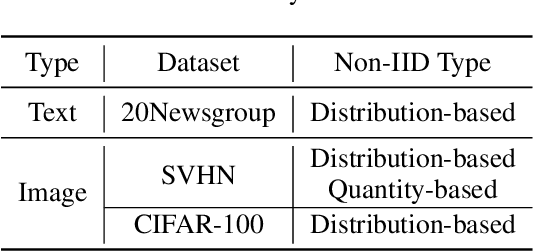
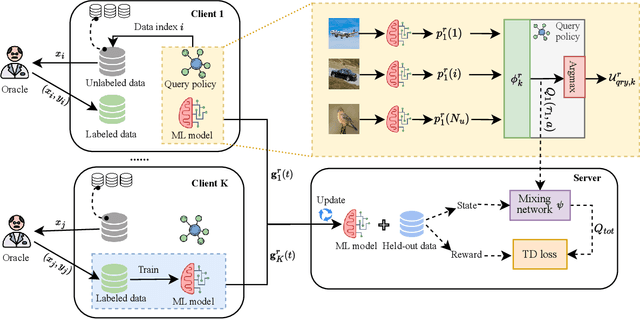
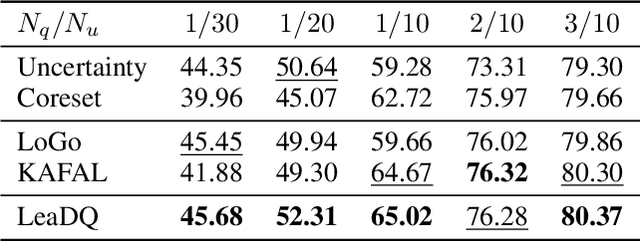
Abstract:Federated learning (FL) enables collaborative learning among decentralized clients while safeguarding the privacy of their local data. Existing studies on FL typically assume offline labeled data available at each client when the training starts. Nevertheless, the training data in practice often arrive at clients in a streaming fashion without ground-truth labels. Given the expensive annotation cost, it is critical to identify a subset of informative samples for labeling on clients. However, selecting samples locally while accommodating the global training objective presents a challenge unique to FL. In this work, we tackle this conundrum by framing the data querying process in FL as a collaborative decentralized decision-making problem and proposing an effective solution named LeaDQ, which leverages multi-agent reinforcement learning algorithms. In particular, under the implicit guidance from global information, LeaDQ effectively learns the local policies for distributed clients and steers them towards selecting samples that can enhance the global model's accuracy. Extensive simulations on image and text tasks show that LeaDQ advances the model performance in various FL scenarios, outperforming the benchmarking algorithms.
Towards Real Zero-Shot Camouflaged Object Segmentation without Camouflaged Annotations
Oct 22, 2024Abstract:Camouflaged Object Segmentation (COS) faces significant challenges due to the scarcity of annotated data, where meticulous pixel-level annotation is both labor-intensive and costly, primarily due to the intricate object-background boundaries. Addressing the core question, "Can COS be effectively achieved in a zero-shot manner without manual annotations for any camouflaged object?" we affirmatively respond and introduce a robust zero-shot COS framework. This framework leverages the inherent local pattern bias of COS and employs a broad semantic feature space derived from salient object segmentation (SOS) for efficient zero-shot transfer. We incorporate an Masked Image Modeling (MIM) based image encoder optimized for Parameter-Efficient Fine-Tuning (PEFT), a Multimodal Large Language Model (M-LLM), and a Multi-scale Fine-grained Alignment (MFA) mechanism. The MIM pre-trained image encoder focuses on capturing essential low-level features, while the M-LLM generates caption embeddings processed alongside these visual cues. These embeddings are precisely aligned using MFA, enabling our framework to accurately interpret and navigate complex semantic contexts. To optimize operational efficiency, we introduce a learnable codebook that represents the M-LLM during inference, significantly reducing computational overhead. Our framework demonstrates its versatility and efficacy through rigorous experimentation, achieving state-of-the-art performance in zero-shot COS with $F_{\beta}^w$ scores of 72.9\% on CAMO and 71.7\% on COD10K. By removing the M-LLM during inference, we achieve an inference speed comparable to that of traditional end-to-end models, reaching 18.1 FPS. Code: https://github.com/R-LEI360725/ZSCOS-CaMF
Kaleidoscope: Learnable Masks for Heterogeneous Multi-agent Reinforcement Learning
Oct 11, 2024



Abstract:In multi-agent reinforcement learning (MARL), parameter sharing is commonly employed to enhance sample efficiency. However, the popular approach of full parameter sharing often leads to homogeneous policies among agents, potentially limiting the performance benefits that could be derived from policy diversity. To address this critical limitation, we introduce \emph{Kaleidoscope}, a novel adaptive partial parameter sharing scheme that fosters policy heterogeneity while still maintaining high sample efficiency. Specifically, Kaleidoscope maintains one set of common parameters alongside multiple sets of distinct, learnable masks for different agents, dictating the sharing of parameters. It promotes diversity among policy networks by encouraging discrepancy among these masks, without sacrificing the efficiencies of parameter sharing. This design allows Kaleidoscope to dynamically balance high sample efficiency with a broad policy representational capacity, effectively bridging the gap between full parameter sharing and non-parameter sharing across various environments. We further extend Kaleidoscope to critic ensembles in the context of actor-critic algorithms, which could help improve value estimations.Our empirical evaluations across extensive environments, including multi-agent particle environment, multi-agent MuJoCo and StarCraft multi-agent challenge v2, demonstrate the superior performance of Kaleidoscope compared with existing parameter sharing approaches, showcasing its potential for performance enhancement in MARL. The code is publicly available at \url{https://github.com/LXXXXR/Kaleidoscope}.
 Add to Chrome
Add to Chrome Add to Firefox
Add to Firefox Add to Edge
Add to Edge